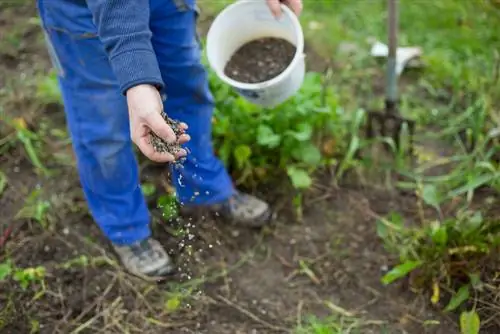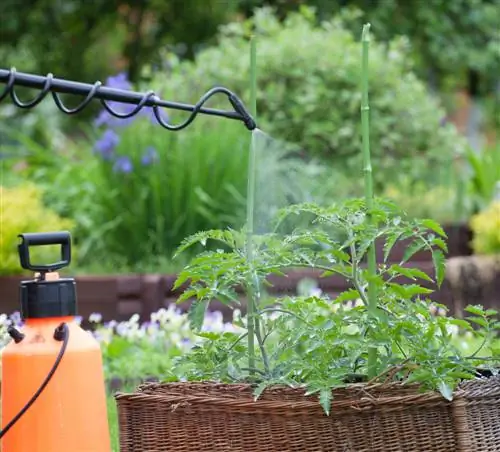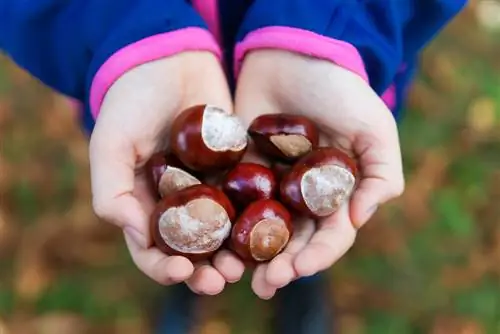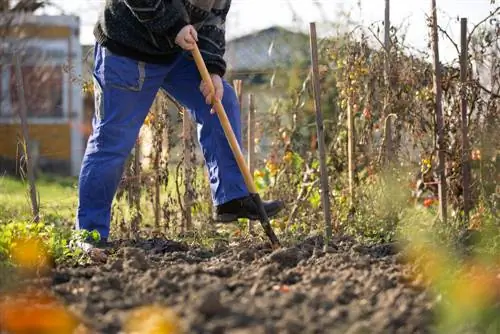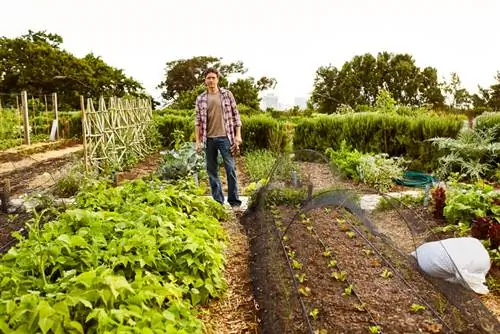- Author admin [email protected].
- Public 2023-12-16 16:46.
- Last modified 2025-01-23 11:21.
The months of September and October are quite labor-intensive for garden owners. Numerous fruits and vegetables are now ripening and of course have to be harvested and processed. The emptying beds are then dug up or gently worked with a digging fork. You should use this opportunity to incorporate lime, potassium, magnesium and phosphate fertilizers as needed and thus prepare the soil for the coming season.

How do I care for a vegetable garden in autumn?
In autumn, caring for a vegetable garden is characterized by harvesting, sowing, watering and protective measures. Harvest ripe fruit and vegetables, plant and sow winter vegetables such as lamb's lettuce or spinach, water in dry conditions and protect sensitive plants from frost.
Take care of your vegetable garden properly in autumn
You still need to water the garden in autumn if it stays dry. This is especially true for strawberries because the moisture promotes the development of new flowers and thus has a direct influence on the harvest in the coming year. The soil should be mulched and/or loosened regularly so that air continues to reach the roots. If it rains constantly, stick tomatoes - which, by the way, should still be pruned and trimmed - should be protected with a foil roof.
Protection against the first frosty nights
The first frosty nights often begin around mid-October. Above all, freshly planted and Mediterranean herbs, but also sensitive late-season vegetables, should now be provided with winter protection. Potted plants with little frost resistance belong in a bright and cool place in the house.
Cutting fruit trees
You can still prune fruit trees well in early autumn. However, if these are carried out until late October, it is better to postpone the cut until the next spring or the following summer. On the other hand, you cut autumn raspberries immediately after the last harvest, and the worn canes of the blackberries can also be removed. Only the young canes remain on the trellis as winter protection.
Which fruits and vegetables are harvested in autumn
The last fruit should be picked before the temperatures drop below zero at night. It is also important to harvest fruit vegetables and legumes such as potatoes, bulb fennel, radishes and onions before the onset of frost. Tomatoes and pumpkins ripen very well indoors. Carrots, beetroot, turnips, lettuce and lettuce, on the other hand, can also tolerate light frost. Brussels sprouts and especially kale, on the other hand, taste best after they have been exposed to light frost.
Planting and sowing in the autumn garden
In September you can still sow numerous vegetables and herbs outside, for example:
- Lamb lettuce
- Spinach
- Arugula
- Winter purslane
- Garden cress
- Wild garlic (for next year's harvest)
- Real chamomile (also)
You can still plant lettuce and ice lettuce outside until around mid-September, and winter onion sets, garlic, wild garlic and rhubarb until October. More robust herbs such as parsley and comfrey can also be planted well in autumn. Garden strawberries are ideally planted in early September, while greenhouse seeds for the winter and early spring harvest are sown in October. This especially applies to lamb's lettuce and spinach.
Tip
If the beds are cleared in September, you can still plant various green manure plants such as phacelia or mustard. In October this is only possible with winter rye.


